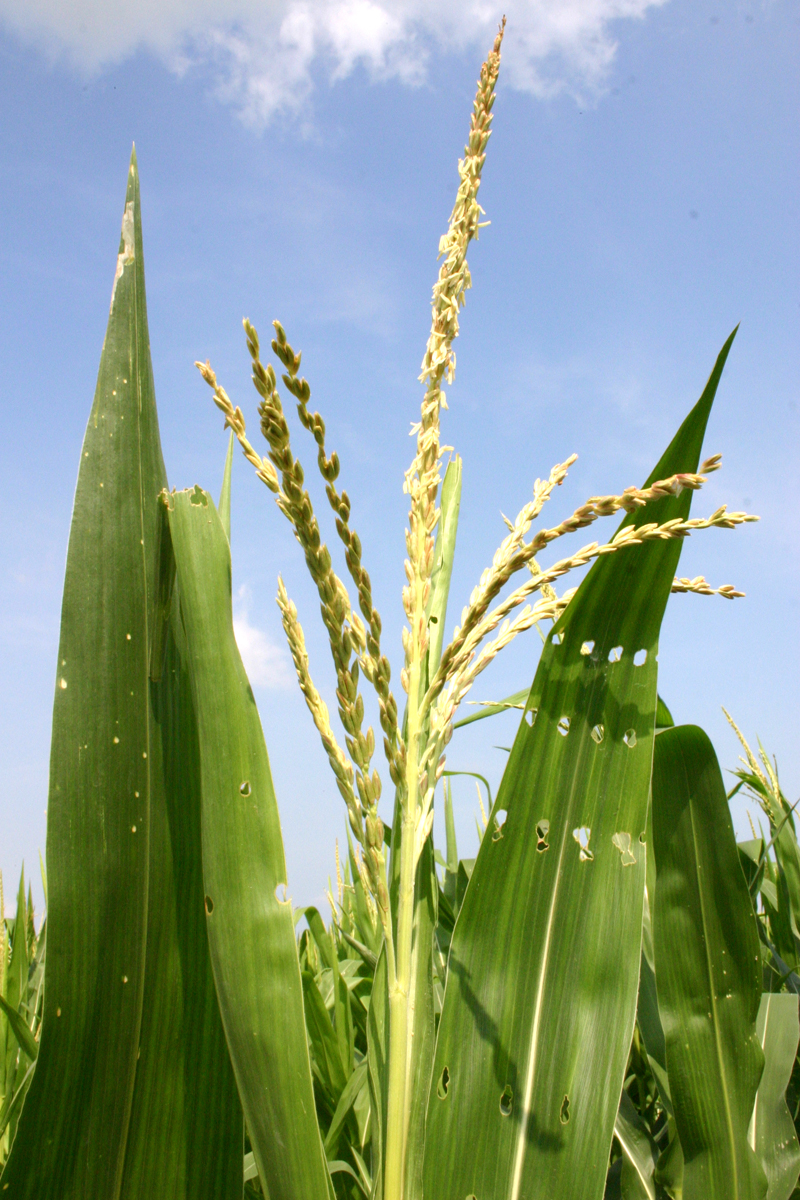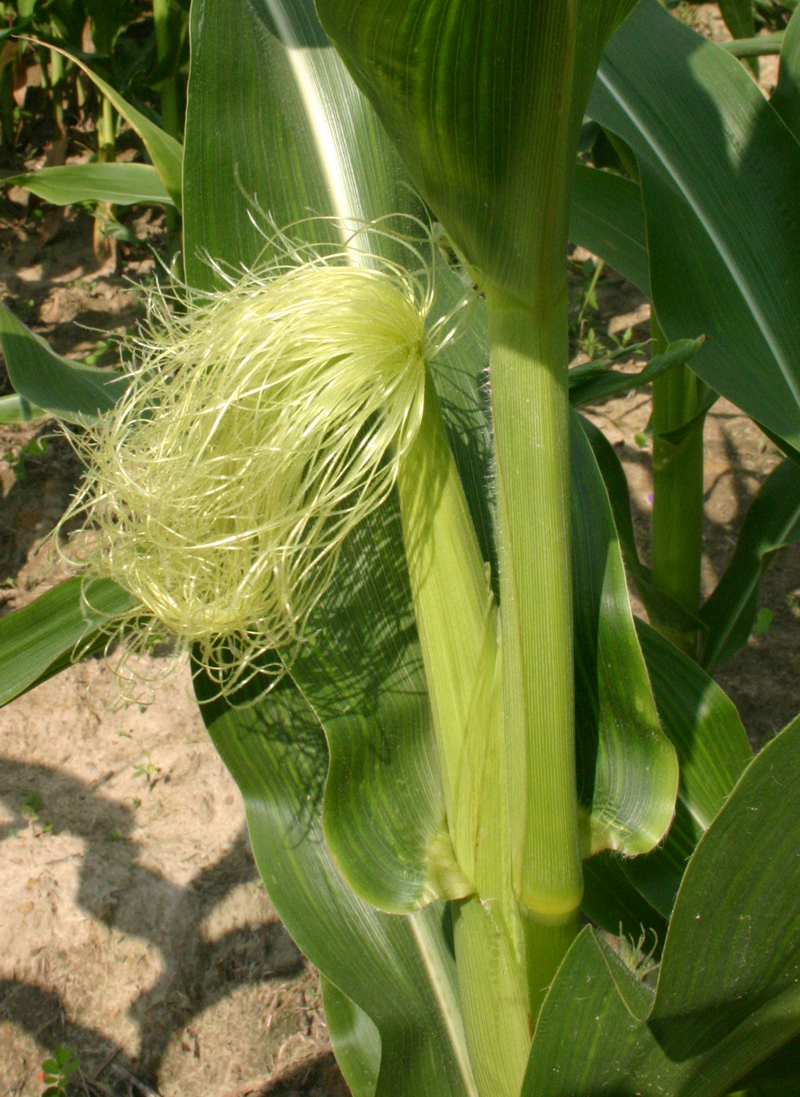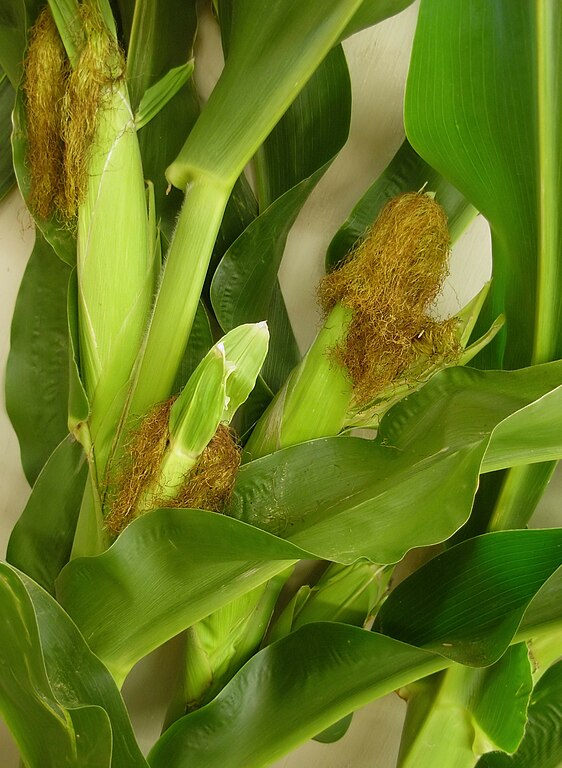Growing corn at home is easier than you might think. All you need is a sunny spot in your garden and some basic gardening supplies.
Soil composition and ph levels for corn plant
Soil is a complex mixture of minerals, organic matter, water, and air. The physical and chemical properties of soils are constantly changing due to the action of living organisms, including plants, animals, and microorganisms. Soils vary widely in their composition and properties, depending on their location and the climate. For example, sandy soils are typically found in dry climates, while clay soils are more common in wetter regions. The type of soil in which a plant grows can have a significant impact on its growth and development.
Corn is a type of cereal grain that is typically grown in fields with deep, fertile soils. The ideal soil for corn production is loamy sand or sandy loam with a neutral pH level. Soils that are too acidic or too basic can impede the uptake of nutrients by the plant roots, resulting in poor growth. Corn plants also require adequate levels of phosphorus and potassium for optimal growth. These nutrients are typically found in commercial fertilizers designed for corn production.

The Watering of the corn plants
The Watering of corn plants is a process where water is delivered to the roots of the plant through a series of tubes or hoses. The water delivery system is usually automated and controlled by a computerized irrigation system. The irrigation system will turn on the pumps and sprinklers at set times to deliver the correct amount of water to the corn plants. The goal of watering corn plants is to keep the roots moist so they can absorb the nutrients from the soil and grow properly. Over-watering can lead to problems such as root rot and fungal diseases. Under-watering can cause the plant to wilt and eventually die. The best way to water corn plants is to give them a deep soaking about once a week, depending on the weather conditions.
The Flowering of corn plant
The flowering of corn plants is a beautiful sight. The plant produces a large number of small flowers, which can range in color from white to yellow to pink. The flowers are borne on the tips of the plant’s leaves, and each flower has both male and female reproductive organs. The flowers are pollinated by wind or insects, and the resulting seed is used to produce the plant’s fruit. The fruit of the corn plant is a large, hard kernels that are used for food or fuel. The flowering of corn plants plays an important role in the life cycle of the plant, and it is also an important event in the history of agriculture.

The Fruiting of corn plants
The fruiting of corn plants is a crucial process in the growth and development of the plant. The Fruiting of corn plants begins with the formation of ears on the corn plants. The ears are the reproductive organs of the plant, and they contain both male and female flowers.
The male flowers are called the tassels, and they release pollen that fertilizes the female flowers, which are called the silks. The silks emerge from the ear and open to receive the pollen. Once pollinated, the silks turn into kernels of corn.
The Fruiting of corn plants is a complex process, but it is essential for the plant to produce kernels of corn. Without this process, there would be no corn to eat!

Propagation of corn plants
Propagation of corn plants can be done either by seed or by cuttings. When propagating by seed, the seed must first be placed in a warm, moist environment to germinate. Once the seedlings have emerged, they can be transplanted into individual pots or into the garden bed. Corn plants can also be propagated by taking cuttings from mature plants. The cuttings should be taken from the tips of the branches and should include several sets of leaves. The cuttings should then be placed in a glass of water and set in a bright, sunny location. After a few weeks, the cuttings will develop roots and can be transplanted into individual pots or the garden bed. Propagating corn plants is a simple process that can be done by anyone with a little patience and time.
Propagate corn plants using seeds
Propagating corn plants using seeds is a relatively simple process that can be done at home with just a few supplies. The first step is to obtain a ripe ear of corn from a mature plant. Next, the kernels should be carefully removed from the ear and placed in a bowl or container. Once all of the kernels have been collected, they should be rinsed with clean water to remove any dirt or debris. Then, the seeds should be placed on a layer of moist paper towels and covered with another layer of damp paper towels. Finally, the paper towels should be placed in a sealed plastic bag or container and placed in a warm, dark location for germination. After about two weeks, the corn seeds should sprout and can then be transplanted into individual pots or beds. By following these steps, it is possible to successfully propagate corn plants using seeds.

Pests and diseases affecting corn plants
Pests and diseases can have a devastating effect on corn plants. Some of the most common pests include earworms, cutworms, and aphids. These pests can damage the plant by eating the leaves or stem, which can weaken the plant and make it more susceptible to disease. Aphids also produce a sticky substance called honeydew, which can attract other pests and promote the growth of sooty mold. Diseases affecting corn plants include fungal diseases such as downy mildew and rust, as well as bacterial diseases such as blight and leaf spot. These diseases can cause the plant to lose leaves, stunt its growth, and reduce its yield. Pests and diseases are a major threat to corn plants, and growers must be vigilant in order to protect their crops.
Irritation to pets from corn plants
Irritation to pets from corn plants can come in many forms. The first and most common form is contact dermatitis, which occurs when the plant’s sap comes into contact with the skin. This can cause severe itching and redness, and in severe cases, hair loss. Ingestion of the plant can also cause stomach upset, vomiting, and diarrhea. Finally, corn plants can release pollen into the air, which can cause respiratory irritation in both humans and animals. If you suspect that your pet has come into contact with a corn plant, it is important to seek veterinary care immediately. With prompt treatment, most pets will make a full recovery.
Varieties of the corn plants
The corn plant is a versatile and adaptable crop that comes in many different varieties. The most common type of corn grown in the United States is sweet corn, which is typically used for canning or eating fresh. Other popular varieties include field corn, which is used for animal feed, and popcorn, which is a type of flint corn. No matter what the variety, all types of corn share a few common features, such as a tall stalk with large leaves and an ear of kernels. The kernels are where the majority of the nutrients are found, and they come in a range of colors, from white and yellow to red and blue. While the vast majority of corn plants are grown for human consumption, some varieties are also used for ornamentation or biofuel. With so many different uses, it’s no wonder that the humble corn plant has become one of the most important crops in the world.
Growing corn plants in containers and pots
Growing corn plants in containers and pots is possible, but there are a few things to keep in mind. First, the container should be deep enough to accommodate the plant’s root system. Second, the pot should have good drainage to prevent the roots from rotting. Third, the plant will need full sun to produce strong ears of corn. fourth, the container should be large enough to support the plant as it grows taller. Finally, water the plant regularly to ensure that the soil stays moist. By following these tips, you can successfully grow corn plants in containers and pots.

General care for corn plants
Corn plants are relatively easy to care for, but there are a few things to keep in mind in order to ensure a healthy crop. First, corn requires full sun in order to thrive, so choose a planting spot that receive at least six hours of direct sunlight per day. Second, corn is a heavy feeder and benefits from regular applications of fertilizer. A general-purpose fertilizer applied three times throughout the growing season should be sufficient. Third, corn is a thirsty plant and needs Plenty of water to grow. irrigation during extended periods of dry weather is necessary to prevent the plants from suffering from drought stress. By following these simple tips, you can ensure that your corn plants will be healthy and productive.
Companion plants of corn plants
Companion planting is an ancient gardening technique that involves planting different crops together in order to maximize their growth potential. Companion plants can provide support for each other, help to repel pests, and increase the overall yield of the garden. When it comes to companion planting for corn, there are a few key plants that are known to be particularly beneficial. One of the best companion plants for corn is beans. Beans add nitrogen to the soil, which helps to fertilize the corn plants and promote growth. In addition, beans also have a tendency to climb up corn stalks, providing support and keeping the ears of corn from touching the ground where they are more likely to rot. Another good companion plant for corn is squash. Squash helps to shade the ground around the corn plants, which helps to prevent evaporation and keeps the soil moist. In addition, squash also produces a chemical that deters many common insect pests, which helps to protect the corn plants from damage. When planted together, beans and squash make an ideal team that can help each other to reach their full potential.
Planting of and spacing between corn plants
Planting of and spacing between corn plants is very important to ensure a good crop. Corn should be planted in rows that are 18 to 24 inches apart. Planting depth should be 1 to 1 1/2 inches deep. Planting deeper helps the corn plant to anchor itself better and results in fewermissing kernels. Spacing between corn plants within the row should be 6 to 8 inches apart. This allows the corn plants room to fill out and provides good air circulation, which reduces the chances for disease. Planting closer together will result in a smaller yield per plant. Planting too far apart will result in fewer ears of corn per unit area and therefore also a lower yield. Good yields can be expected when plant populations are between 35,000 and 40,000 plants per acre. Planting at these recommended densities also allows for mechanical cultivation if needed. Following these guidelines will help you have a good crop of corn.
The ideal time for growing corn plants
The ideal time for growing corn plants is in the spring, after the last frost. The soil should be warm and the days should be long. The corn plants will need about six weeks to mature before they are ready to harvest. The best time to plant corn is in late April or early May. If you plant the corn too early, it may not have enough time to mature before the first frost. If you plant it too late, the corn may not be as sweet as it could be. The ideal time to harvest corn is in mid-September. The corn plants will need about six weeks to mature before they are ready to harvest. The best time to plant corn is in late April or early May. If you plant the corn too early, it may not have enough time to mature before the first frost. If you plant it too late, the corn may not be as sweet as it could be. The ideal time to harvested corn is in mid-September.
Benefits of the corn plants
Corn has many benefits and uses. For example, it can be used as food for humans and livestock, as a biofuel, and in the production of chemicals and plastics. Corn is also an important crop in the United States, where it is used to make products such as corn syrup and corn oil. In addition, corn planting can help to prevent soil erosion. The Benefits of the corn plants are vast and varied. As a result, it is an important crop that should continue to be grown and used. Thanks for the question!
The lifespan of a corn plant
The lifespan of a corn plant can vary depending on the growing conditions. In favorable conditions, corn plants can live for several years. However, in harsher conditions, such as drought or infestation, corn plants may only live for one season. The longevity of a corn plant is also affected by its genetics. Some varieties of corn are bred to be more resilient and have a longer lifespan than others. In general, though, the lifespan of a corn plant is relatively short, especially when compared to other crops such as wheat or rice. However, the high yield of corn makes it an essential crop for many farmers.
How to grow corn in a kitchen garden?
Many gardeners enjoy the challenge of growing corn in their kitchen gardens. Corn is a relatively easy crop to grow, and it can be a very rewarding experience to see your hard work pay off in a bountiful harvest. There are a few things to keep in mind when growing corn, however. First, it is important to choose a variety of corn that is well-suited to your growing conditions. There are many varieties of corn available, so be sure to do your research before making your selection. Second, corn is a heavy feeder, so be sure to provide ample amounts of fertilizer and water throughout the growing season. Finally, corn is susceptible to pests and diseases, so be sure to stay on top of crop maintenance. By following these simple tips, you can enjoy a successful harvest of fresh corn from your very own kitchen garden.
How to grow corn in your backyard?
How to grow corn in your backyard? Corn is a warm-season annual that is best planted after the last frost date in spring. Corn needs full sun and well-drained, fertile soil with a pH of 6.0 to 6.8. Before planting, work the soil 8 to 10 inches deep, and then add 2 to 3 pounds of fertilizer per 100 square feet of garden space. After the corn has germinated and grown to about 6 inches tall, thin the plants so they are about 12 to 18 inches apart. To ensure pollination, plant several rows of corn rather than just one row. Water regularly, especially during dry periods, and fertilize every few weeks according to package directions. Corn is ready to harvest when the ear kernels are plump and the husks are dark green. Peel back the husks slightly to check for doneness, then pull off the whole ear and strip away the husks. Enjoy your home-grown corn fresh from the garden!
How to grow corn outside, in the fields?
Corn is a type of grass that is grown all over the world. It is used to make many things, such as food, animal feed, and fuel. Corn can be grown in different ways, but the most common way is to grow it in the fields.
There are a few things you need to know before you start growing corn in the fields. The first thing is that you need to choose the right type of soil. Corn likes to grow in sandy soils that have good drainage. The second thing is that you need to choose the right location. Corn needs full sun to grow well, so it is important to find a spot in your field that gets a lot of sunlight.
Once you have chosen the right spot and soil, you are ready to plant your corn. You will need to plant the seeds about 1 inch deep in the soil. After you have planted the seeds, you will need to water them well. Then, all you have to do is wait for the corn to grow! In about 2-3 months, your corn will be ready to harvest.
